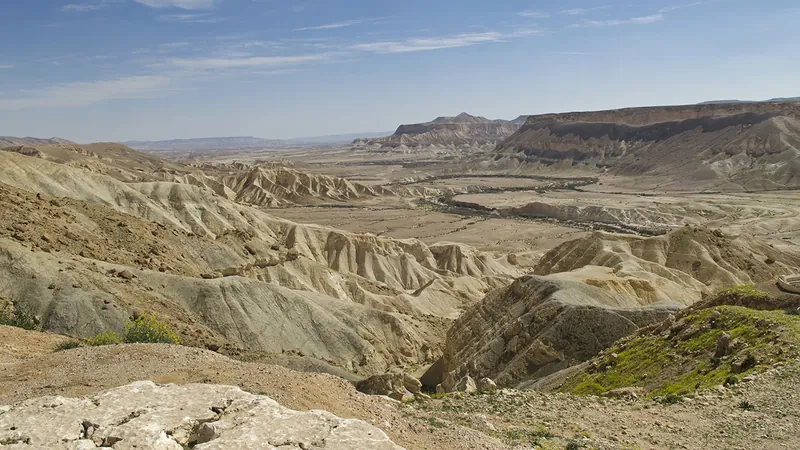
How Climate Change Is Rapidly Transforming Our Landscapes
2025-04-14
Author: Wei Ling
The Surprising Impact of Wet Weather on Drainage Patterns
New research has uncovered a startling connection between climate shifts and the rapid migration of drainage divides—the key features that dictate how water flows across our landscapes. This study, conducted in Israel's Negev Desert, demonstrates just how swiftly these geological features can move when a typically dry climate experiences wet weather.
Revealing the Secrets of the Negev Desert
Using innovative methods including field observations, sediment dating, and numerical modeling, scientists traced the migration of drainage divides in this arid region. Over the studied period, these divides, which usually shift at a leisurely pace of 1.1 kilometers (0.7 miles) per million years, surged forward in response to wetter conditions.
As geomorphologist Mikaël Attal noted, "This is the first study directly measuring the rates of drainage divide migration, which is crucial for understanding erosion and managing water resources." Understanding these changes helps researchers make sense of past climates and inform future water management strategies.
When Drains Move: The Mechanics Behind It
Water travels downhill and collects into rivers before draining into lakes or oceans. Drainage divides act as the deciding line for water's path. As Attal explained using North America's Great Divide as an example, a single raindrop can end up in vastly different oceans based on which side of the divide it falls on.
The migration of these divides occurs when one side experiences faster erosion than the other, prompting rivers to change course, sometimes dramatically.
Technological Innovations in Studying Geomorphic Changes
Determining how these divides migrate over short periods has been a challenge, as many geomorphic markers tend to erode away. However, the researchers pioneered a method using well-preserved river terraces in the Negev to mark previous locations of these divides. By dating these terraces using optically stimulated luminescence, they could reconstruct the divide's impressive 258-meter migration over the last 227,000 years.
Climate's Role in Divide Migration
The findings illuminate periods of rapid migration that coincided with wetter climatic intervals, specifically between 220,000 to 190,000 years ago and 35,000 to 20,000 years ago. These times saw increased storms and floods in the dry Negev, leading to alterations in the landscape.
Models showed that only scenarios incorporating climate fluctuations could reproduce the migration patterns, hinting at the powerful influence of climate on landforms. Harel emphasized that this is the first direct evidence linking drainage migration to climatic changes on much shorter timescales than previously recognized.
Why This Matters for Our Future
As the frequency and intensity of extreme weather events rise due to climate change, understanding how drainage patterns can change rapidly is crucial. In areas rich in loose sediment, flooding could reroute rivers and permanently shift drainage divides.
Attal emphasized that this research underscores the sensitivity of certain landscapes to climate fluctuations—an increasingly relevant topic as we face a changing global climate.
This groundbreaking study not only sheds light on the dynamic relationship between climate and geomorphology but also serves as a clarion call for being aware of and proactive about the impact of climate change on our natural world.



 Brasil (PT)
Brasil (PT)
 Canada (EN)
Canada (EN)
 Chile (ES)
Chile (ES)
 Česko (CS)
Česko (CS)
 대한민국 (KO)
대한민국 (KO)
 España (ES)
España (ES)
 France (FR)
France (FR)
 Hong Kong (EN)
Hong Kong (EN)
 Italia (IT)
Italia (IT)
 日本 (JA)
日本 (JA)
 Magyarország (HU)
Magyarország (HU)
 Norge (NO)
Norge (NO)
 Polska (PL)
Polska (PL)
 Schweiz (DE)
Schweiz (DE)
 Singapore (EN)
Singapore (EN)
 Sverige (SV)
Sverige (SV)
 Suomi (FI)
Suomi (FI)
 Türkiye (TR)
Türkiye (TR)
 الإمارات العربية المتحدة (AR)
الإمارات العربية المتحدة (AR)